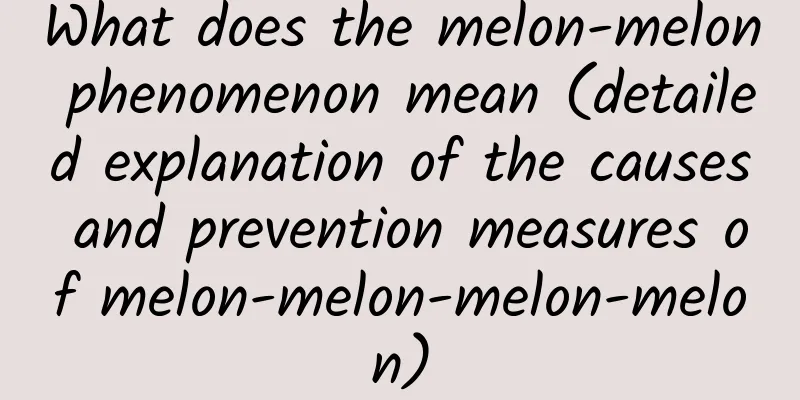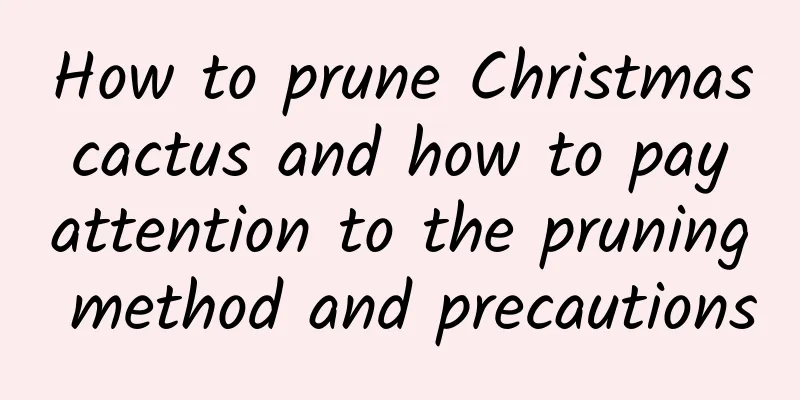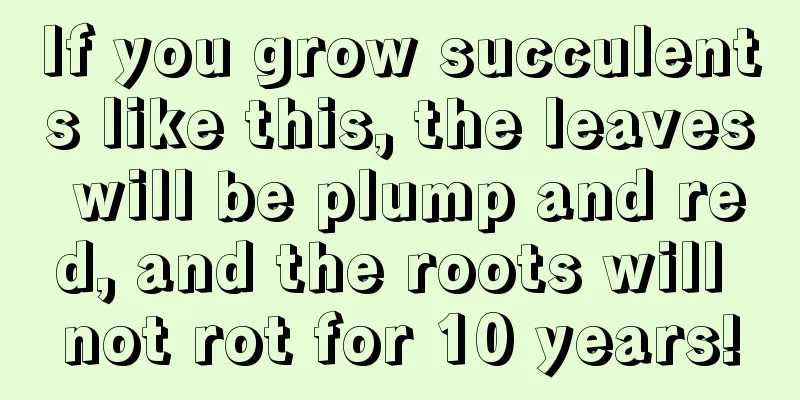What does the melon-melon phenomenon mean (detailed explanation of the causes and prevention measures of melon-melon-melon-melon)

|
In the spring of April and May, I planted some loofahs, melons, and pumpkins in my own yard. One reason was to provide shade, and the other was that I could eat them conveniently at home. As the weather gradually warms up, the melon seeds have sprouted. After a few days, the melon seedlings have grown a lot and should be transplanted. If the spacing is too small, it is likely to affect the growth of the young melons. In severe cases, it will cause the melons to rot and the yield will be reduced . Melon rot is caused by temperature, humidity and other reasons during the fruit setting process of all melon vegetables. Young melons rot 7 to 10 days after the flowers fall, resulting in a decrease in yield. How to prevent the occurrence of melon melting1. Sufficient fertility during the fruit setting periodWhen the plant enters the fruit-setting period, top dressing and watering should be carried out to ensure that the plant's roots can absorb more nutrients to provide normal growth of branches, leaves, and fruits, and prevent the phenomenon of flower dropping and fruit rotting due to lack of fertilizer and water . 2. The distance between rows should be reasonableFor climbing melons such as cucumber, squash, loofah, bitter gourd, etc., you must pay attention to the distance between rows and spaces, and they should not be planted too close or too small. Too large a spacing will affect the yield, while too close a spacing will seriously cause poor ventilation and uneven light, which can easily lead to melon rot . 3. SoilChoose plots with thick, loose, breathable soil and good water and fertilizer retention for planting. Do not choose low-lying, poorly permeable soil plots for planting, as poor soil permeability will affect the downward extension and growth of the roots. Therefore, the nutrients absorbed are relatively small. When the plant enters the fruit-setting period, the amount of fertilizer and water required is relatively high. The small amount of nutrients absorbed by the plant cannot meet its normal growth requirements, resulting in melon melting and flower falling. 4. Ventilation and light transmissionChoose a plot with sufficient light and no obstructions for planting. When the plant enters the peak flowering period, normal pollination is needed to increase the fruit setting rate. If the flower bud differentiation is incomplete due to insufficient light during the peak flowering period, deformed fruits and fruit molting will appear after fruit setting. If the leaves are too dense in some areas, you can thin them out to improve ventilation and light exposure, and reduce the chances of melon rot and deformity. To prevent the fruit rot phenomenon, flower, fruit and leaf thinning can be carried out during the flowering and fruit setting periods. Flower and fruit thinning can avoid the reduction of nutrients due to lack of fertilizer and water, which affects normal fruit setting. Leaves can be removed according to actual conditions to prevent nutrient loss and improve ventilation. Reasonable pruning and trimming can be carried out early to prevent melon rot. |
Recommend
How to prune miniature roses
Pruning methods First of all, during the flowerin...
Throw a piece of fruit peel into the pot, and the flowers will grow strong and vigorous!
Watermelon rind It is said that there are three p...
Wand Fertilization Method
1. Application of base fertilizer The application...
How to care for Kalanchoe in summer
Summer growth conditions Kalanchoe is in a dorman...
When is the best time to harvest ginseng?
Ginseng Harvest Time Ginseng is best harvested wh...
When is the best time to plant okra in the north? When is the best time to plant okra in the north?
Okra has similar effects to leeks, and is a nutri...
How to grow yellow bell wood
1. Soil It requires fertile sandy soil containing...
When does Astragalus membranaceus bloom?
When does Astragalus membranaceus bloom? When doe...
How to plant crab claw orchid
1. Cutting time The right time for cuttings is th...
Classification of lucky tree species
Phaseolus microcarpa (Lucky Tree) Single pinnate ...
Introduction to the use and operation steps of cake fertilizer (scientific application of cake fertilizer as topdressing)
What is cake fertilizer Cake fertilizer is actual...
Gloriosa's Flower Language and Cultural Background
The Flower Language of Gloriosa The flowers of Gl...
What to do if hyacinth leaves turn black
1. Reasons 1. Frostbite Its bulbs are very cold-r...
Why does Jilongyue drop its leaves?
Water If you water too much and the ventilation i...
What to do if the leaves of a rubber tree become soft and droop after repotting (tips for restoring a newly planted rubber tree from drooping)
What to do if the leaves of the rubber tree droop...









